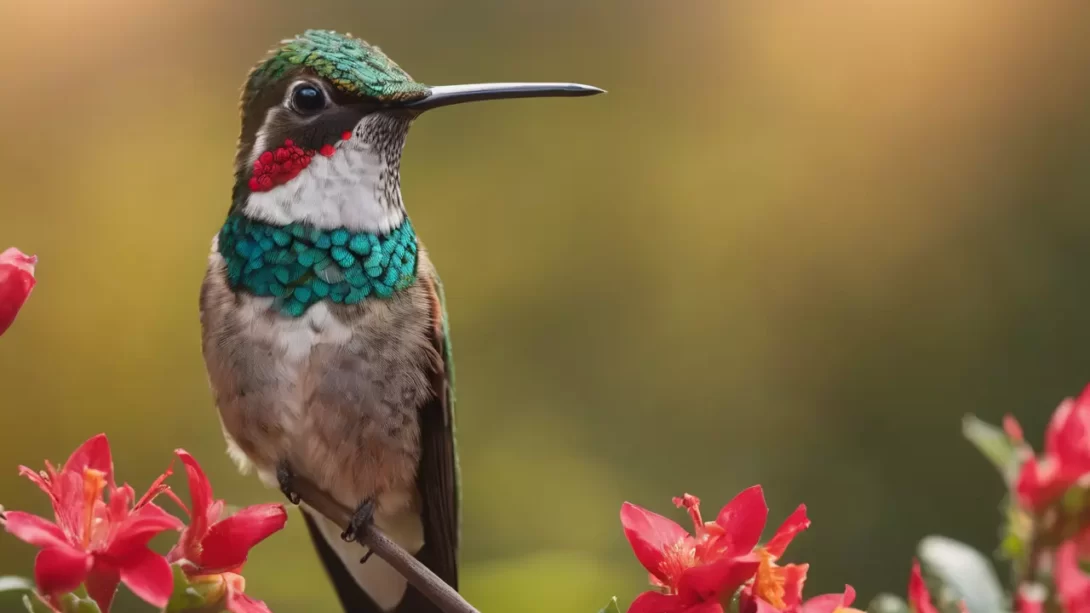Hummingbirds, known for their vibrant colors and rapid wing movement, are an essential part of the ecosystem, playing a key role in pollination. Recognizing the signs of a dying hummingbird can be crucial for providing timely care or contacting wildlife experts for assistance. This guide aims to help bird enthusiasts and nature lovers identify these signs.
Physical Appearance
One of the first indicators of a hummingbird in distress is a noticeable change in its physical appearance. A healthy hummingbird typically has smooth, well-groomed feathers. Signs of illness or distress may include ruffled or puffed-up feathers, drooping wings, and eyes that are closed or half-open. These changes can indicate that the bird is not able to maintain its normal grooming behavior, which is essential for its health and functionality.
Behavior Changes
Behavioral changes can also signal that a hummingbird is struggling. Healthy hummingbirds are extremely active and rarely stay still for long during daylight hours. If you notice a hummingbird perching for unusually long periods, showing a lack of energy, or an inability to fly, it may be a sign of distress. Additionally, hummingbirds that are found lying on the ground or unable to stay upright are likely experiencing serious health issues.
Feeding Patterns
Another important aspect to monitor is the hummingbird’s feeding pattern. Hummingbirds feed frequently throughout the day on nectar and small insects. A reduction in appetite or difficulty in feeding – such as struggling to hover or repeatedly missing flowers – can be indicative of a health problem. It’s important to note these changes, especially if the bird is visiting a feeder or garden regularly.
Breathing Difficulties
Respiratory issues are a serious sign of distress in hummingbirds. Due to their rapid metabolism and high energy levels, any breathing difficulty can quickly become life-threatening. Indicators of respiratory distress include labored breathing, open-mouth breathing, or unusual wheezing sounds. In severe cases, you might notice the bird’s chest heaving as it struggles to breathe. This can be caused by a respiratory infection, a physical injury, or even exposure to toxins.
Response to Stimuli
A healthy hummingbird is typically alert and responsive to its environment. A lack of response or a very slow response to external stimuli can be a sign that the bird is in a critical state. This might be apparent when the hummingbird does not react to nearby movement or noise, which would ordinarily cause a wild bird to flee or show alert behavior. A delayed reaction time or disorientation can indicate neurological problems or severe weakness.
Environmental Factors
Environmental factors can significantly impact the health of hummingbirds. Extreme cold, for instance, can be detrimental to these warm-weather birds. They can become sluggish and unable to access food, leading to starvation or hypothermia. Additionally, a lack of available food sources, especially during migration periods, can lead to exhaustion and starvation. Exposure to pesticides or other toxins in their feeding areas can also cause severe health issues.
When to Seek Help
If you encounter a hummingbird exhibiting the signs discussed, it’s important to know when and how to seek help. If the bird is in immediate danger (e.g., exposed to predators, in extreme temperatures), gently placing it in a safe, sheltered area can be a temporary measure. However, avoid handling the bird excessively, as this can cause additional stress.
For a hummingbird that appears injured or ill, the best course of action is to contact a local wildlife rehabilitator or a bird conservation group. These professionals have the expertise and resources necessary to provide appropriate care. It’s important not to attempt to care for the bird yourself, as hummingbirds have specialized dietary and care needs.
When contacting a wildlife expert, provide as much information as possible about the bird’s condition and location. This will help them assess the situation and give you specific instructions on how to proceed. In some cases, they may instruct you on how to safely transport the bird to a rehabilitation center.
Conclusion
Recognizing the signs of a dying hummingbird – such as changes in physical appearance, behavior, feeding patterns, breathing difficulties, and response to stimuli – is crucial for their conservation. Environmental factors also play a significant role in their well-being. By understanding these signs and knowing when to seek professional help, you can contribute to the conservation efforts of these remarkable birds. Remember, the well-being of hummingbirds is a delicate balance, and timely intervention can make a significant difference in their survival and health.




